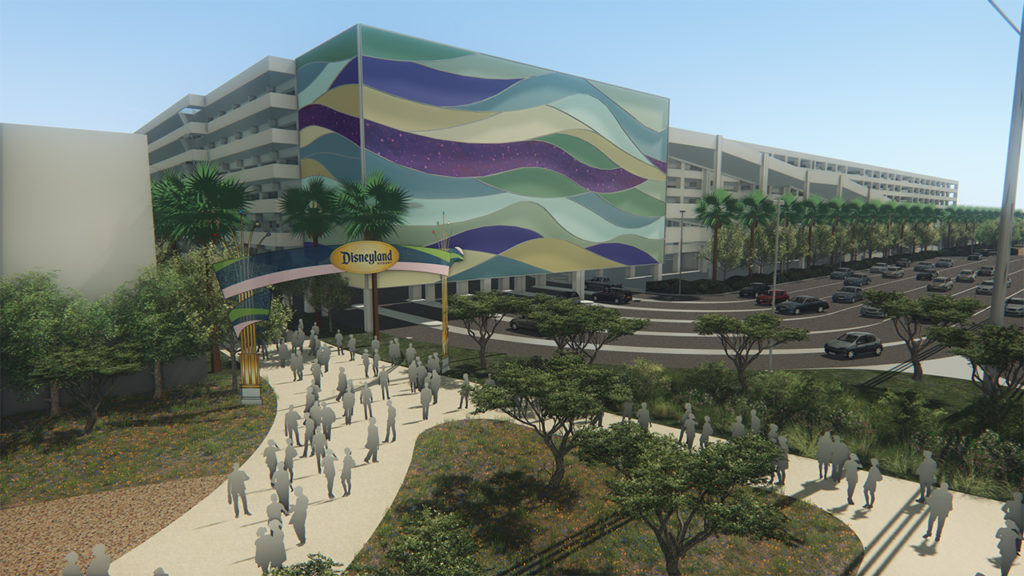A group of business on Harbor Blvd near the Disneyland Resort have formed the Harbor Boulevard Merchants Coalition to express their concerns with Disney’s Eastern Gateway project.
The project is described by Disney as a new parking structure with 6,800 spaces, a new transportation facility and an elevated pedestrian bridge. There are concerns that the new bridge will bypass the existing businesses that survive on serving tourists that are walking to and from the Disneyland Resort.
“The City has been extraordinarily generous in its long-term no-tax-on-tickets promise to Disneyland,” said Robert Harbin, Executive Director of the Harbor Boulevard Merchants Coalition. “We anticipate that some of that spirit will come back to Anaheim with an openness to the needs of the community. Disney’s investment of $1 billion can help us or hurt us.”
The group claims the project may be illegal providing three explanations.
The impact and details of the massive project are governed by California’s Environmental Quality Act, Anaheim’s municipal code and binding commitments since the park opened in 1955. It may be illegal, for example, to heedlessly cause dozens of successful businesses to fail and close. In the Anaheim Resort Specific Plan and the Anaheim Municipal Code, Harbor Boulevard is expected to be a “high quality pedestrian environment” serving as the core of the Anaheim resort area. The Anaheim Resort Plan also describes Harbor Boulevard as “an active street environment for shopping, dining and lodging within walking distance from the theme parks.” If the theme parks arrange to keep their visitors off Harbor Boulevard, it will no longer be an active environment for them.
Another requirement of the law is the Environmental Impact Report, which says the new construction should be designed to “provide convenient access to all hotel, restaurant, and retail opportunities in the Anaheim Resort to enhance the areawide tourist experience.” The Anaheim Resort Specific Plan also declares this intent: to “safeguard and enhance property values.” Instead of providing convenient access or enhancing property values, the gateway project separates Disney tourists from Harbor Boulevard and Anaheim by walling off any access.
Another red flag on the question of legality is a 20-year-old City-Disney commitment: any “proposed development shall not limit or adversely affect the growth and development potential of adjoining lands or the general area.” That will be a broken promise if the gateway project proceeds as it is proposed now.
The list of the coalitions requests include:
• A commitment from the City and Disneyland to form an ad hoc work group, as well as hold additional public workshops. Disney has indicated that they do not want to hold any additional public workshops. This continuing lack of transparency on the part of Disney stands in the way of creating a project that is respectful to the community and in compliance with State and local laws and regulations.
• A current and thorough environmental impact report as required by the California Environmental Quality Act, including close scrutiny of the likelihood that the project will cause urban decay and blight.
• A better looking design of all the elements. Nothing in the project, as shown in the plans that have been made public, looks appealing to viewers from outside the park. The state law requires new construction to avoid aesthetic dissonance. Urban decay, the law notes, is caused by ugly additions to a neighborhood as well as by division of a historically unified area.
• Direct access to and from the bridge from Harbor Boulevard. Security clearances will have to be conducted nearer to the park, if not within it. If the security clearances are conducted outside the park, the City will have to consider and mitigate the risks that will come with moving the security clearance from Disney property, where it is now, to a site the city must protect close to hotels, shops and restaurants.
• A written commitment to never close the existing east gate to the park. It admits visitors directly from Harbor Boulevard, without subjecting them to a 20-minute hike past, through and over the parking tower, transportation hub, security complex and bridge.
• A comprehensive wayfinding sign program informing visitors of entertainment, lodging, dining and shopping opportunities in the neighborhood

